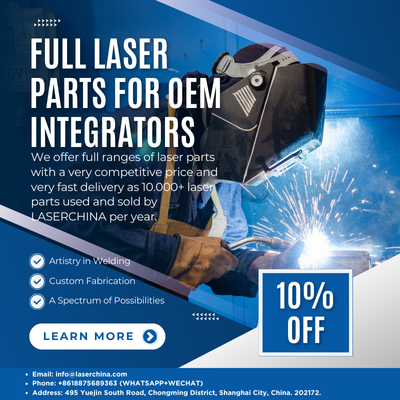Handheld fiber laser machines have revolutionized industrial marking and cleaning processes over the past decade. Unlike traditional engraving, etching, or cleaning methods, these portable, high-precision devices leverage fiber laser technology to deliver faster, more efficient, and environmentally friendly solutions across multiple industries. Let’s explore both their advantages and wide-ranging applications.
Advantages:
-
High Precision and Quality: Handheld fiber lasers produce extremely fine beams, allowing for intricate designs and detailed markings with minimal material waste. This level of precision ensures clean edges without damaging the surrounding material, which is essential for industries like aerospace, automotive, and electronics.
-
Portability and Flexibility: Unlike stationary laser systems, handheld models provide the convenience of mobility. Operators can carry the lightweight device to hard-to-reach places, large workpieces, or onsite locations. This reduces the need for disassembly or transportation of heavy equipment, saving time and costs.
-
Non-contact Process: Laser marking and cleaning is a non-contact method, meaning there is no physical tool that wears out or damages the material. This makes it ideal for delicate surfaces and extends the longevity of the machine itself.
-
Eco-friendly Solution: Traditional cleaning methods often involve chemicals, abrasives, or solvents that can harm the environment and pose safety risks. Fiber laser cleaning, on the other hand, uses only light energy to remove rust, paint, or contaminants, producing minimal waste and no harmful emissions.
-
Low Maintenance and Operating Cost: Fiber lasers have fewer moving parts and longer operational lifespans compared to CO₂ or YAG lasers. They consume less power, require less maintenance, and have lower running costs, making them an economical choice for businesses in the long term.
Applications:
-
Metal Cleaning: Handheld fiber lasers are widely used for removing rust, paint, and oxides from metal surfaces. In industries like shipbuilding, oil & gas, and construction, this technology helps restore metal parts without damaging the base material.
-
Surface Preparation: Before welding or coating, laser cleaning is used to prepare metal surfaces by removing contaminants, which improves bonding strength and quality.
-
Marking and Engraving: From serial numbers, barcodes, and logos to artistic designs, handheld fiber lasers offer permanent and high-contrast marking on metals and some plastics. This is crucial in sectors like medical devices, electronics, and automotive manufacturing.
-
Restoration Projects: In the heritage conservation sector, laser cleaning is preferred for removing pollutants and deposits from historical monuments and sculptures without harming their original structure.
-
Mold Cleaning: In the rubber and plastic industry, fiber lasers clean molds quickly without the use of abrasive materials, thus extending mold life and improving product quality.
Conclusion:
Handheld fiber laser machines represent a leap forward in terms of efficiency, versatility, and sustainability. Their precision, low operational cost, and eco-friendly nature make them a favored choice across multiple industries for marking, cleaning, and surface treatment tasks. As laser technology continues to advance, the demand for portable and high-performance solutions like these is expected to grow, driving further innovation in manufacturing and maintenance practices.




